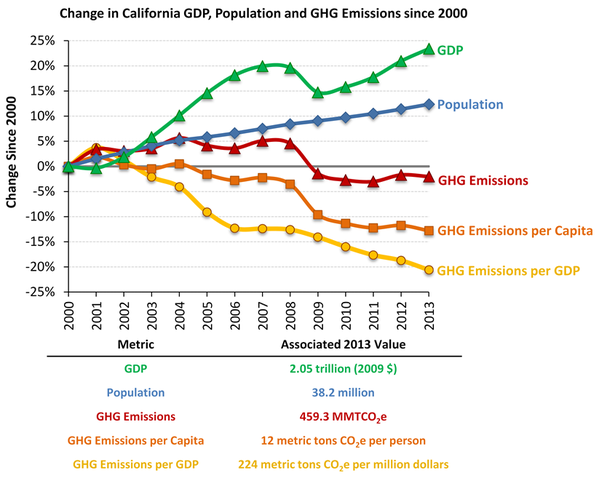
[Update: On August 31, 2016, Governor Jerry Brown and legislators agreed to invest an additional $900 million in cap-and-trade proceeds to reduce greenhouse gas emissions, bringing the total to date to $3.2 billion. The article has been updated to reflect the change.]
When it comes to reducing the risk of climate change and advancing a clean economy, California’s policy innovations, commitment to equity, and strong outcomes are recognized around the world. In September, it will be 10 years since Governor Arnold Schwarzenegger signed the state’s landmark clean energy and climate law, AB 32. The results so far speak for themselves:
#1 in installed solar capacity
#1 in electric vehicles
14.3 percent annual reduction in petroleum use
7.3 percent annual reduction in carbon pollution
$3.2 billion cap-and-trade proceeds invested back into the economy
500,000 clean economy jobs (and #1 growth)
32,636 construction jobs
Energy Foundation grantees representing environmental justice, equity, business, environmental, labor, health, consumer, and faith groups are making the case to Californians that their climate and energy policies work—and the people agree. A July poll found that 69 percent support AB 32’s target to reduce emissions to 1990 levels by 2020 according to the survey by the Public Policy Institute of California. In fact, 68 percent said they support going a step further, strengthening and extending greenhouse gas emission targets.
And that’s exactly what just happened.
Last week, legislators passed a package of bills (SB 32 and AB 197), setting a more aggressive target of 40 percent below 1990 levels by 2030 and increasing legislative oversight of the California Air Resources Board, the agency leading the state’s de-carbonization work. The package also will prioritize reducing emissions in disadvantaged communities by taking aim at local refineries, power plants, and other industrial facilities. Governor Jerry Brown has said he will sign the bills, establishing the strongest carbon cap in North America. The new bills build on the achievement last year with SB 350—which put the state on track to achieve 50 percent clean energy in the electricity supply and double energy efficiency in existing buildings in 15 years.
José Carmona, Program Director, California Campaigns